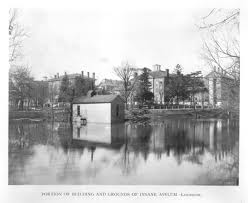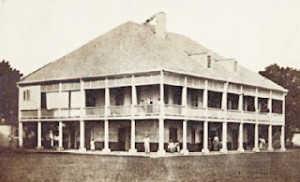Early specialists in mental health (alienists) firmly believed that patients’ physical environment impacted their minds. Asylum superintendents tried to site their institutions in the countryside (thought to be healthier than cities) and advocated for buildings that were spacious, well-ventilated, and accessible to clean water. They urged patients to spend time outdoors working if possible, or simply strolling through landscaped grounds if they could or would not work. Before asylums became too overcrowded for this routine to continue, superintendents seemed to get results with this idea of fresh air and a restful environment.
An 1891 article about Broughton Hospital in Morganton, NC extolled the benefits of its country environment. “The present year shows the number of its cures to be fifty per cent. of it’s [sic] admissions, which last numbered 148 persons,” the writer proclaimed. Even more astounding was the institution’s death rate of only four per cent–half the death rate at most other institutions. “No better testimonial can be offered as to the unrivaled excellence of the Piedmont climate than these simple figures furnish.”

Fire Brigade at Broughton Hospial, Staffed by Patients and Employees, courtesy Broughton Hospital Public Safety
The writer went on to say that though the managers of the Hospital used the “most advanced and scientific methods known to the moderns and utterly discard the wretched system of physical restraint,” they did not attribute their impressive success from “any marked superiority in their treatment over all the rest of their professional brethren.”
Instead, the “eloquent figures” quoted (particularly the death rate) showed “what this pure atmosphere will do for men, half dead when they come here.”




